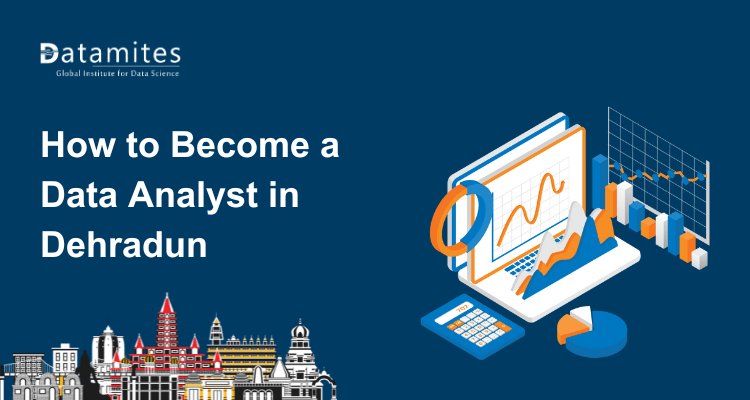Basic Data Cleaning and Preprocessing Techniques

In data science and analytics, raw data is frequently compared to a diamond in the rough. Just as a gemstone requires careful polishing to reveal its true brilliance, raw data demands meticulous cleaning and preprocessing to unlock its full potential. Imagine setting out on a journey with a map full of inaccuracies; without precise adjustments, the destination remains elusive. Similarly, without rigorous data cleaning and preprocessing, your analytical models are prone to errors, inefficiencies, and misleading insights.
In this blog, we delve into the essential best practices for transforming your data into a reliable, high-quality asset, ensuring that your insights are as sharp and actionable as possible. Join us as we explore strategies to refine your data processes and set the stage for informed, impactful decision-making.
Importance of Data Cleaning and Preprocessing
Data cleaning and preprocessing are vital because they enhance the quality of your data, making it more accurate and useful for analysis. Here are the key points highlighting the importance of data cleaning and preprocessing:
- Improving Quality: Ensures data accuracy and consistency.
- Enhancing Analysis: Leads to reliable insights and better decisions.
- Error Handling: Detects and fixes issues early.
- Saving Time: Prevents costly issues later in the process.
- Removing Redundancy: Eliminates duplicates.
- Ensuring Consistency: Standardizes formats for easier analysis.
- Increasing Efficiency: Streamlines data processing.
- Boosting Accuracy: Enhances machine learning model performance.
- Facilitating Integration: Facilitates the integration of data from various sources.
- Ensuring Compliance: Meets regulatory standards.
- Improving Understanding: Makes data more interpretable.
- Reducing Bias: Minimizes errors that can skew results.
These points collectively underscore the critical role of data cleaning and preprocessing in achieving high-quality, actionable insights from data analysis.
Read these articles:
- The Role of Statistics in Data Science
- Power BI vs. Tableau for Data Science
- Subjects in Data Science
Understanding Data Cleaning and Preprocessing
Definition of Data Cleaning
Data cleaning, also known as data cleansing, is the process of identifying and correcting inaccuracies, inconsistencies, and errors in data to improve its quality and reliability. This essential step in data management involves removing or fixing invalid, incomplete, or duplicate records, standardizing data formats, and addressing inconsistencies within the dataset. The goal of data cleaning is to ensure that the data used for analysis, reporting, and decision-making is accurate, consistent, and free from errors, thereby enhancing the overall integrity and usability of the information.
Definition of Data Preprocessing
Data preprocessing is a critical step in the data analysis pipeline that involves preparing raw data for analysis by cleaning, transforming, and organizing it. This process aims to enhance the quality and usability of data, making it suitable for modeling and analysis. It typically includes several key activities such as handling missing values, correcting inconsistencies, normalizing or scaling data, and encoding categorical variables. By refining the data, preprocessing helps improve the accuracy and efficiency of subsequent analytical processes and models, ensuring that insights drawn are based on reliable and well-structured information.
Data cleaning and preprocessing, while different in their goals and scope, are both crucial stages in the data preparation process. They ensure that data is accurate, consistent, and ready for analysis or machine learning.
Common Data Cleaning Techniques
Data cleaning is an essential part of data analysis that involves applying various techniques to ensure that your dataset is accurate, complete, and prepared for analysis. Here are several typical methods for data cleaning:
1. Handling Missing Values
Methods to Handle Missing Values:
- Removal: Effective for datasets with sparse missing values but unsuitable for datasets with extensive missing data.
Imputation:
- Simple Imputation: Using mean, median, or mode; ideal for data missing completely at random.
- Advanced Imputation: Techniques like K-nearest neighbors, regression, or multiple imputation for complex cases.
Considerations: Imputation can lead to bias if the missing data is not random or if the chosen method is inappropriate. Always assess the effect of imputation by comparing the results before and after applying the process.
2. Removing Duplicates
Techniques to Remove Duplicates:
- Exact Matching: Removing records that are identical across all columns.
- Partial Matching: Removing records based on a subset of columns that are expected to be unique.
Considerations:
- Always review the logic used to identify duplicates to avoid removing important data.
3. Correcting Inconsistencies
Techniques for Correcting Inconsistencies:
- Standardization: Ensure consistent formats for dates, currencies, or categorical variables.
- Normalization: Converting data to a common scale or range.
Considerations:
- Inconsistent data might arise from different sources or formats, so understanding the source of inconsistency is crucial for effective correction.
4. Handling Outliers
Methods to Handle Outliers:
- Removal: Only recommended if the outliers are errors or are not relevant to the analysis.
- Transformation: Helps in mitigating the impact of outliers by normalizing the data distribution.
Considerations:
- Evaluate whether outliers are errors or legitimate extreme values, as they can sometimes offer valuable insights.
5. Dealing with Noise
Techniques to Reduce Noise:
- Smoothing: Moving averages, exponential smoothing, and other techniques can help in filtering out random noise.
- Filtering: Use algorithms to filter out unwanted variations.
Considerations:
- Balancing between noise reduction and preserving important information is crucial. Excessive smoothing can cause important patterns in the data to be obscured or lost.
By applying these techniques thoughtfully, you can significantly improve the quality and reliability of your data, leading to more accurate and insightful analyses.
Read these articles:
- What is Certified Data Scientist Course?
- What is Datamites Certified Data Analyst Certification
- What Is AI Engineer Course?
Basic Data Preprocessing Techniques
Data preprocessing is a crucial step in data analysis and machine learning, involving the refinement and cleansing of data to ensure it is ready for effective analysis or modeling. Here are some basic techniques:
1. Data Transformation
- Normalization: Adjusts values to a specific range, like [0, 1], to ensure all features contribute equally.
- Standardization: Transforms data to have a mean of 0 and a standard deviation of 1, making data more comparable across features.
2. Encoding Categorical Variables
- One-Hot Encoding: Transforms categorical variables into binary vectors by assigning a distinct binary feature to each category.
3. Feature Engineering
- Creating New Features: Derives new attributes from existing ones (e.g., extracting month and year from a date).
- Feature Extraction: Uses techniques like Principal Component Analysis (PCA) to identify and keep the most relevant features.
- Importance of Domain Knowledge: Helps in crafting features that are both meaningful and useful for the model.
4. Data Integration
- Combining Data from Multiple Sources: Joins datasets on common keys to create a unified dataset.
- Handling Different Data Formats: Standardizes various data formats into a consistent structure.
- Dealing with Redundancy and Inconsistency: Identifies and resolves duplicate or conflicting data entries.
5. Data Reduction
Reducing Data Volume: Techniques like sampling (selecting a representative subset) and aggregation (combining data) streamline the dataset.
Dimensionality Reduction Techniques:
- PCA (Principal Component Analysis): Minimizes the feature count while retaining the maximum possible variance.
- LDA (Linear Discriminant Analysis): Aims to enhance the distinction between classes to the fullest extent.
Benefits: Simplifies models, cuts down computation time, and can enhance model performance.
Each of these techniques plays a crucial role in preparing data for analysis, ensuring that the data is clean, relevant, and appropriately scaled.
Resources and Tools for Data Cleaning and Preprocessing
When it comes to data cleaning and preprocessing, several tools and libraries can be incredibly useful depending on your programming language of choice. Here are some of the most popular tools and resources for data cleaning and preprocessing:
Pandas:
- Python library for data manipulation and analysis.
- Offers functionalities for handling absent values, altering data formats, and merging datasets.
NumPy:
- Supports large, multi-dimensional arrays and matrices.
- Useful for numerical operations and handling data transformations.
Scikit-learn:
- Provides preprocessing functions for scaling, encoding, and imputation.
- Includes feature selection and dimensionality reduction tools.
Dask:
- Scales pandas workflows to larger datasets and distributed computing.
- Useful for parallel computing and handling out-of-core data processing.
OpenRefine:
- A self-contained utility designed to tidy up disorganized data and convert it between different formats.
- Offers powerful data exploration and transformation capabilities.
Trifacta:
- A data wrangling tool crafted for effortless data cleaning and transformation with a user-friendly approach.
- Uses machine learning to suggest cleaning operations.
Beautiful Soup:
- Library for parsing HTML and XML documents.
- Ideal for extracting and gathering data from web pages through web scraping techniques.
Regex (Regular Expressions):
- A tool crafted to uncover patterns and extract text with precision.
- Crucial for tasks involving text preprocessing and data sanitization.
Data Wrangler:
- Interactive tool for transforming and cleaning data.
- Provides a visual interface for managing and enhancing data operations.
Selecting the ideal tool or library is often guided by the unique needs of your project, such as data volume, the intricacy of preprocessing tasks, and the programming languages or platforms you prefer.
Read these articles:
Best Practices in Data Cleaning and Preprocessing
The importance of data cleaning and preprocessing in the data analysis pipeline cannot be overstated. They ensure that your data is accurate, complete, and in a usable format. Please note the following important details:
- Handling Missing Values: Identify and address missing values through imputation, deletion, or using algorithms that can handle missing data. Imputation can be done using mean, median, or mode, while deletion should be a last resort.
- Removing Duplicates: Eliminate duplicate records to prevent skewed results. This can be done by identifying unique identifiers or using software tools that detect and remove duplicates.
- Normalization and Scaling: Adjust your data so that various features are on a consistent scale. Techniques like Min-Max scaling or Z-score normalization ensure that features contribute equally to the model.
- Data Transformation: Apply transformations such as log or square root to handle skewed data distributions, making them more suitable for analysis.
- Outlier Detection: Spot and handle outliers carefully, as they can skew your results significantly. Use statistical methods or visualization tools to detect and decide how to handle them.
- Feature Encoding: Convert categorical variables into numerical formats using techniques like one-hot encoding or label encoding for compatibility with machine learning algorithms.
- Consistency Checks: Ensure data consistency by verifying formats, units, and ranges across your dataset to maintain uniformity.
Applying these practices helps in building robust, reliable, and accurate data models.
Mastering basic data cleaning and preprocessing techniques is essential for anyone looking to excel in data science and analytics. These foundational skills enable you to prepare your data effectively, ensuring that your analyses and models are accurate and reliable. As you advance in your data science journey, continuing to build on these techniques will be crucial for tackling more complex challenges and deriving actionable insights from your data.
For those seeking to enhance their expertise further, DataMites Institute offers an array of advanced training programs tailored to meet the demands of the data-driven industry. As a leading provider of data science and AI education, DataMites partners with esteemed organizations such as the International Association of Business Analytics Certification (IABAC) and NASSCOM FutureSkills. The comprehensive programs are designed to equip professionals with cutting-edge skills and industry knowledge.
Additionally, DataMites supports learners through valuable resources, including workshops, webinars, and job placement assistance, all aimed at fostering professional growth. Whether you are just starting out or looking to advance your career, DataMites provides the tools and guidance needed to thrive in the dynamic field of data science.





